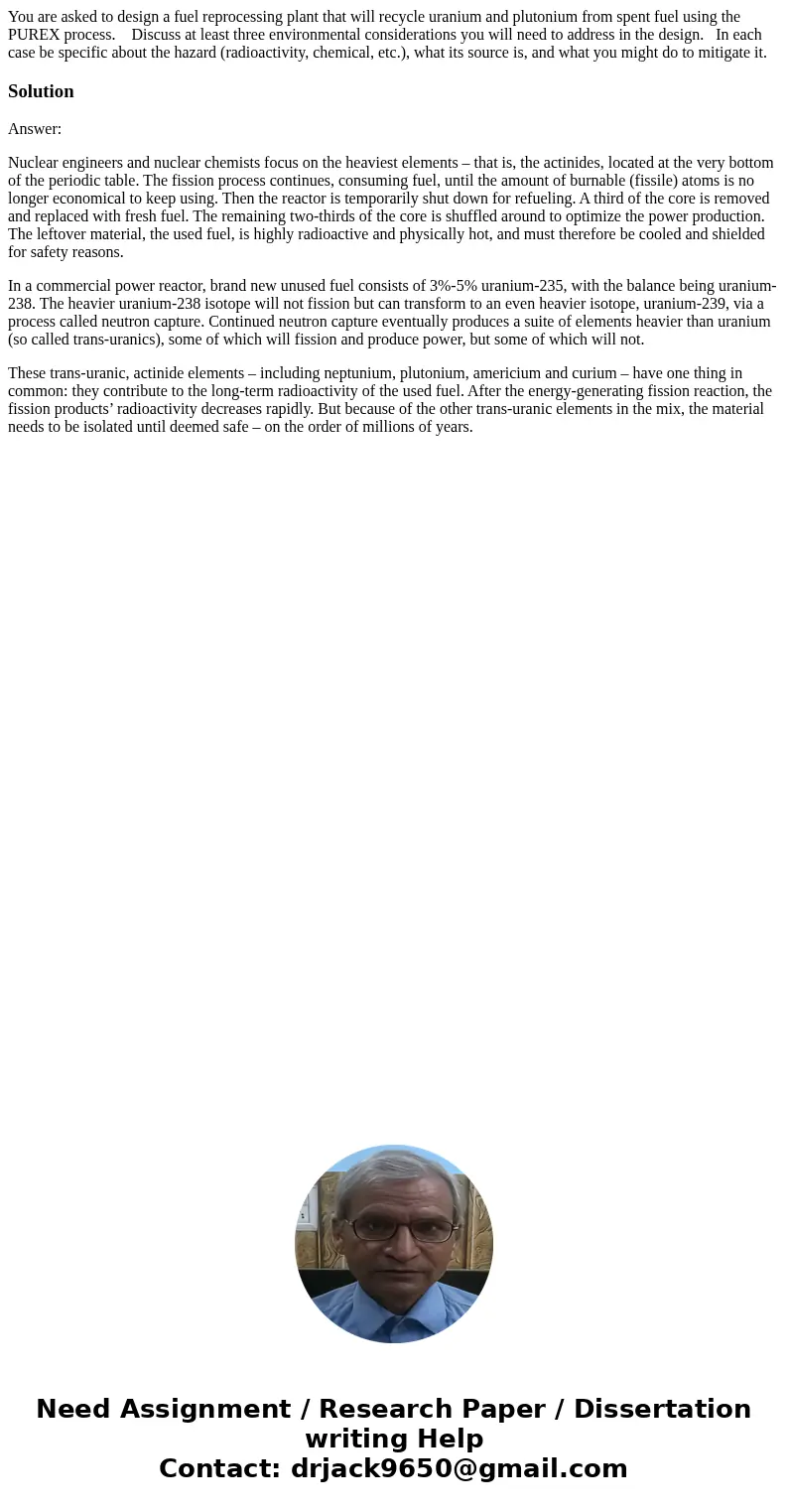You are asked to design a fuel reprocessing plant that will
You are asked to design a fuel reprocessing plant that will recycle uranium and plutonium from spent fuel using the PUREX process. Discuss at least three environmental considerations you will need to address in the design. In each case be specific about the hazard (radioactivity, chemical, etc.), what its source is, and what you might do to mitigate it.
Solution
Answer:
Nuclear engineers and nuclear chemists focus on the heaviest elements – that is, the actinides, located at the very bottom of the periodic table. The fission process continues, consuming fuel, until the amount of burnable (fissile) atoms is no longer economical to keep using. Then the reactor is temporarily shut down for refueling. A third of the core is removed and replaced with fresh fuel. The remaining two-thirds of the core is shuffled around to optimize the power production. The leftover material, the used fuel, is highly radioactive and physically hot, and must therefore be cooled and shielded for safety reasons.
In a commercial power reactor, brand new unused fuel consists of 3%-5% uranium-235, with the balance being uranium-238. The heavier uranium-238 isotope will not fission but can transform to an even heavier isotope, uranium-239, via a process called neutron capture. Continued neutron capture eventually produces a suite of elements heavier than uranium (so called trans-uranics), some of which will fission and produce power, but some of which will not.
These trans-uranic, actinide elements – including neptunium, plutonium, americium and curium – have one thing in common: they contribute to the long-term radioactivity of the used fuel. After the energy-generating fission reaction, the fission products’ radioactivity decreases rapidly. But because of the other trans-uranic elements in the mix, the material needs to be isolated until deemed safe – on the order of millions of years.

 Homework Sourse
Homework Sourse